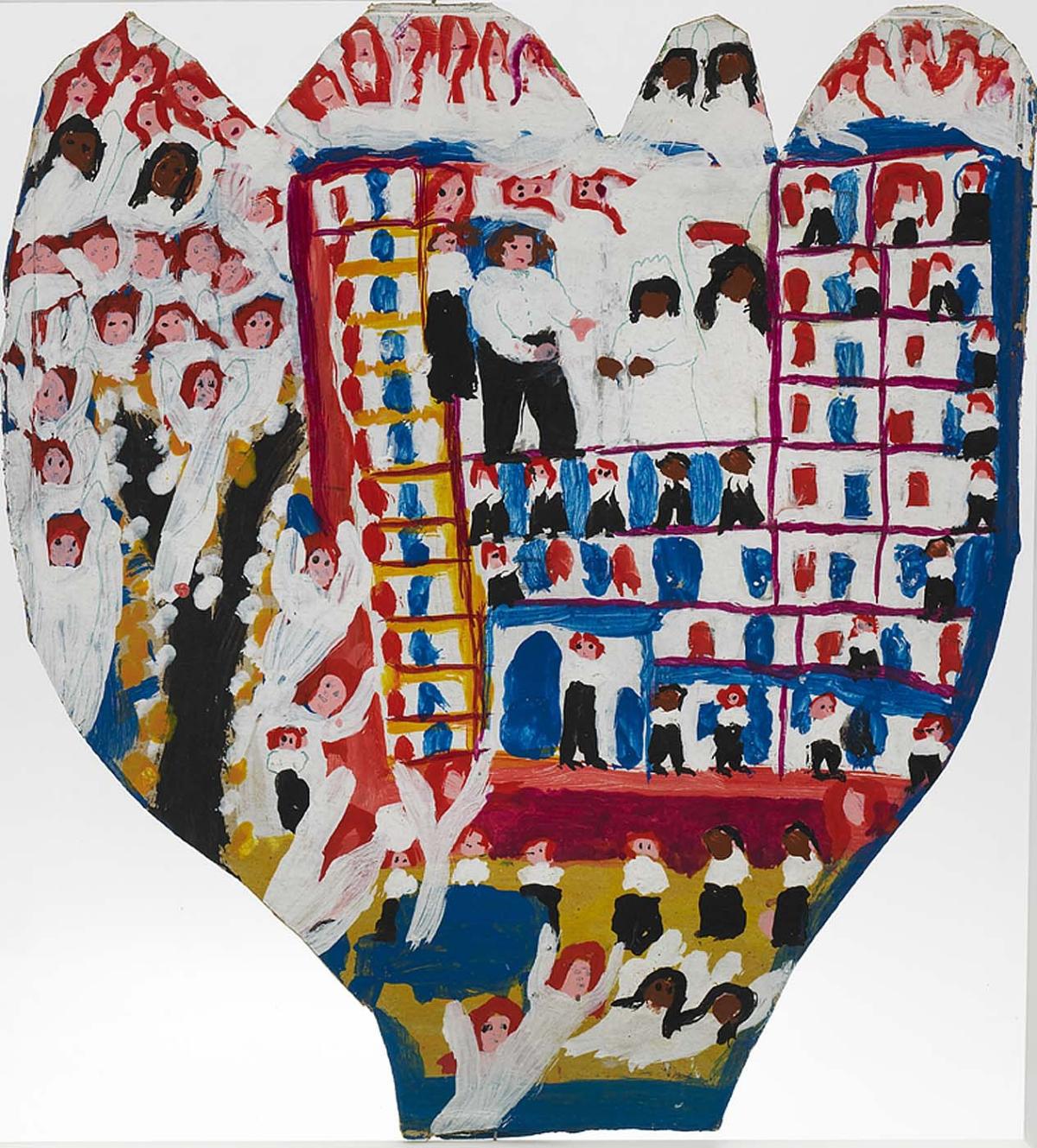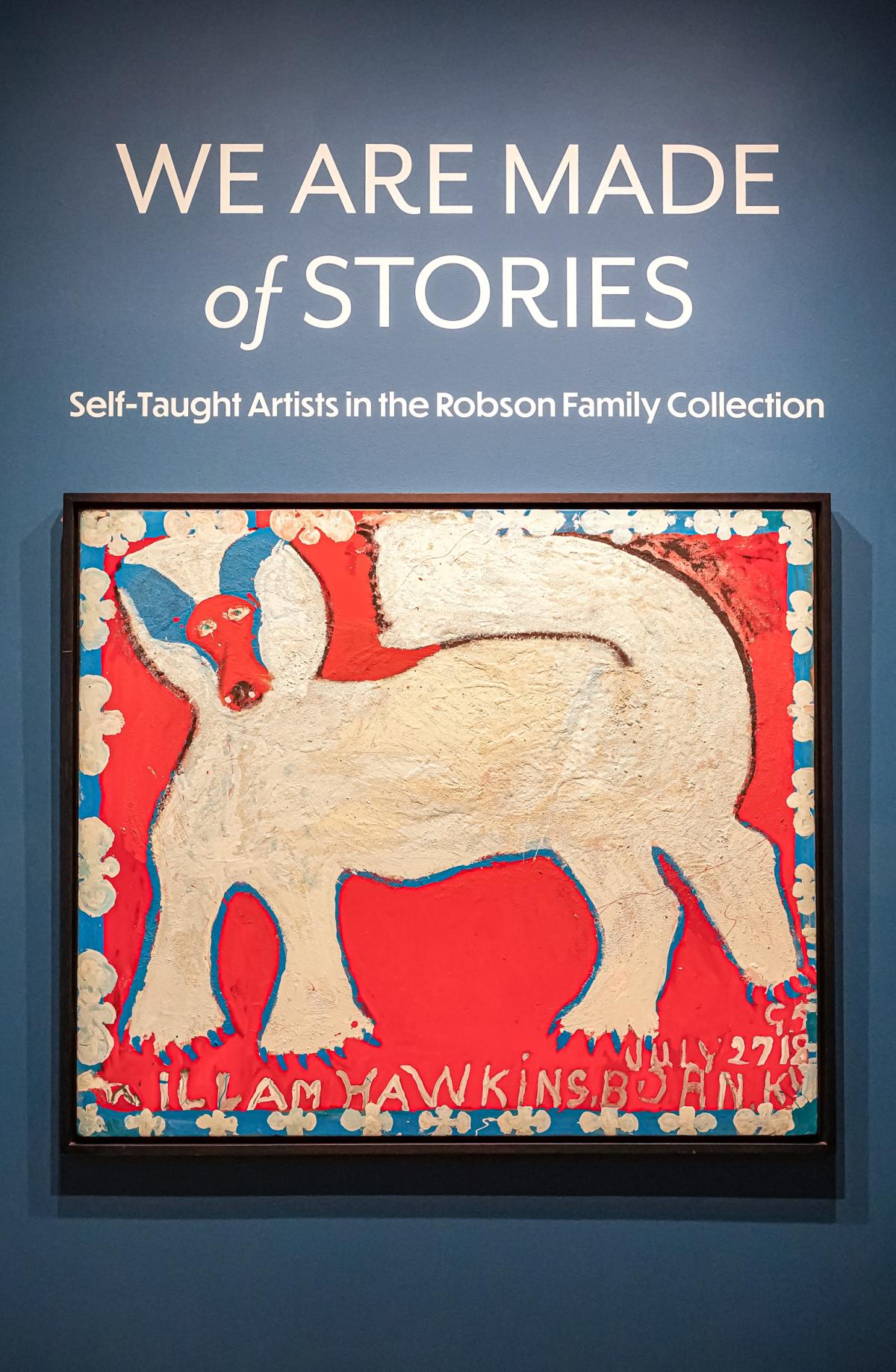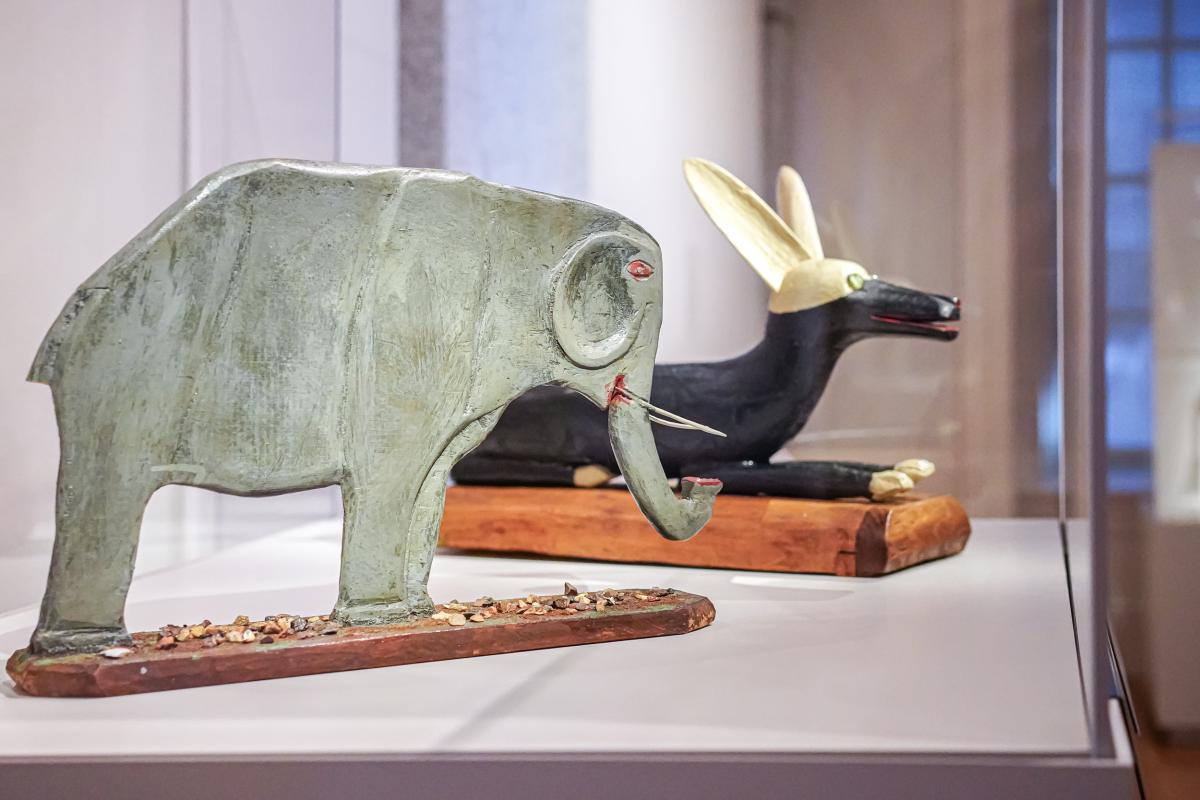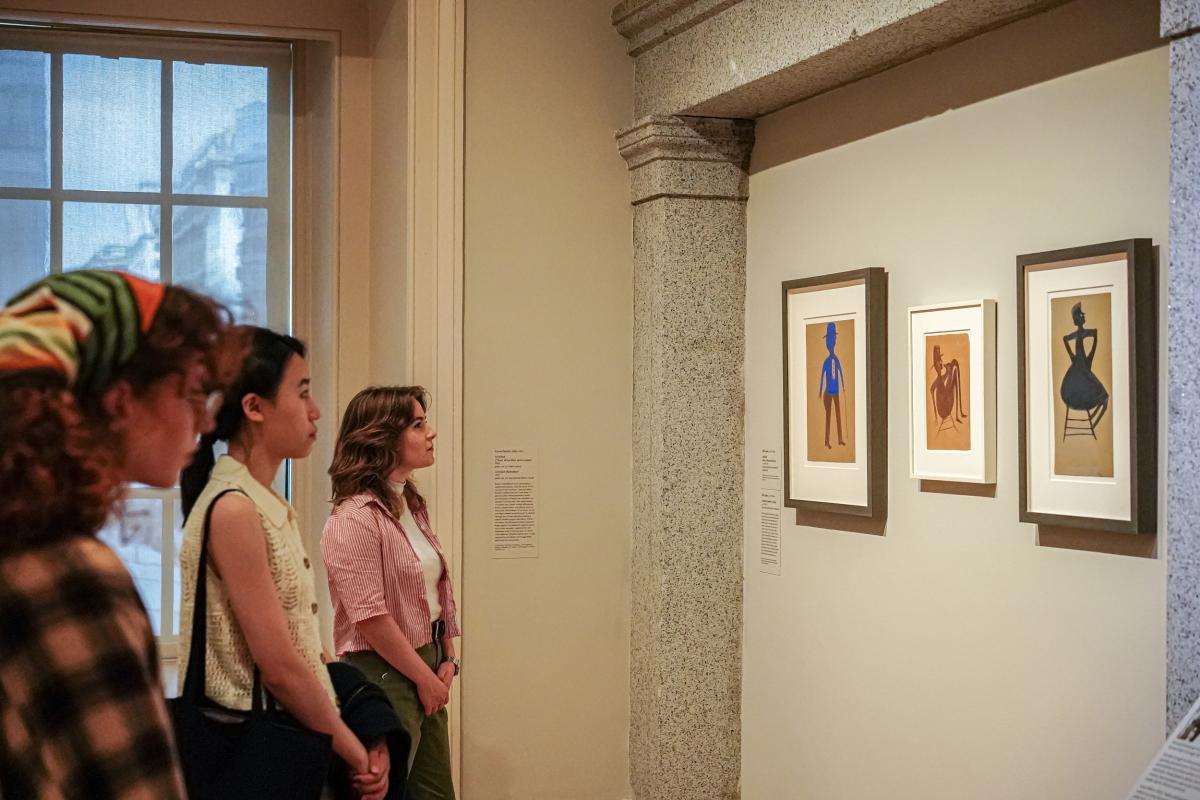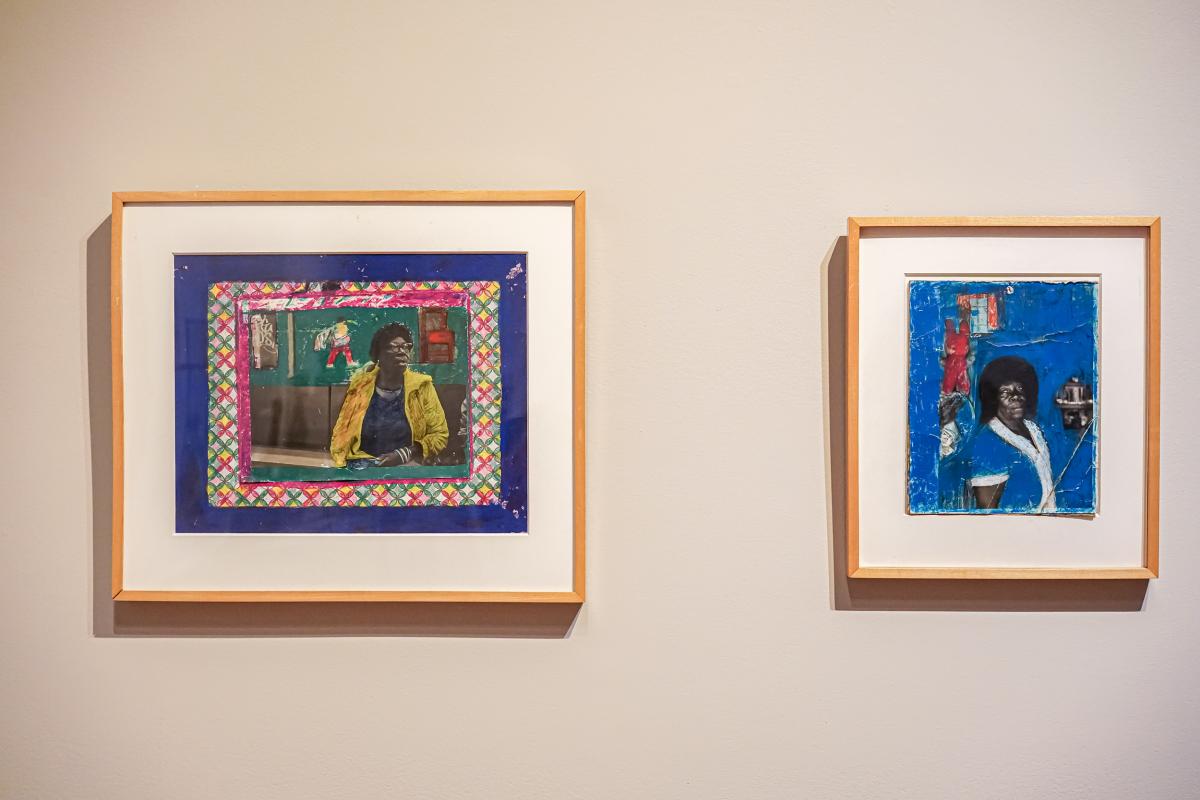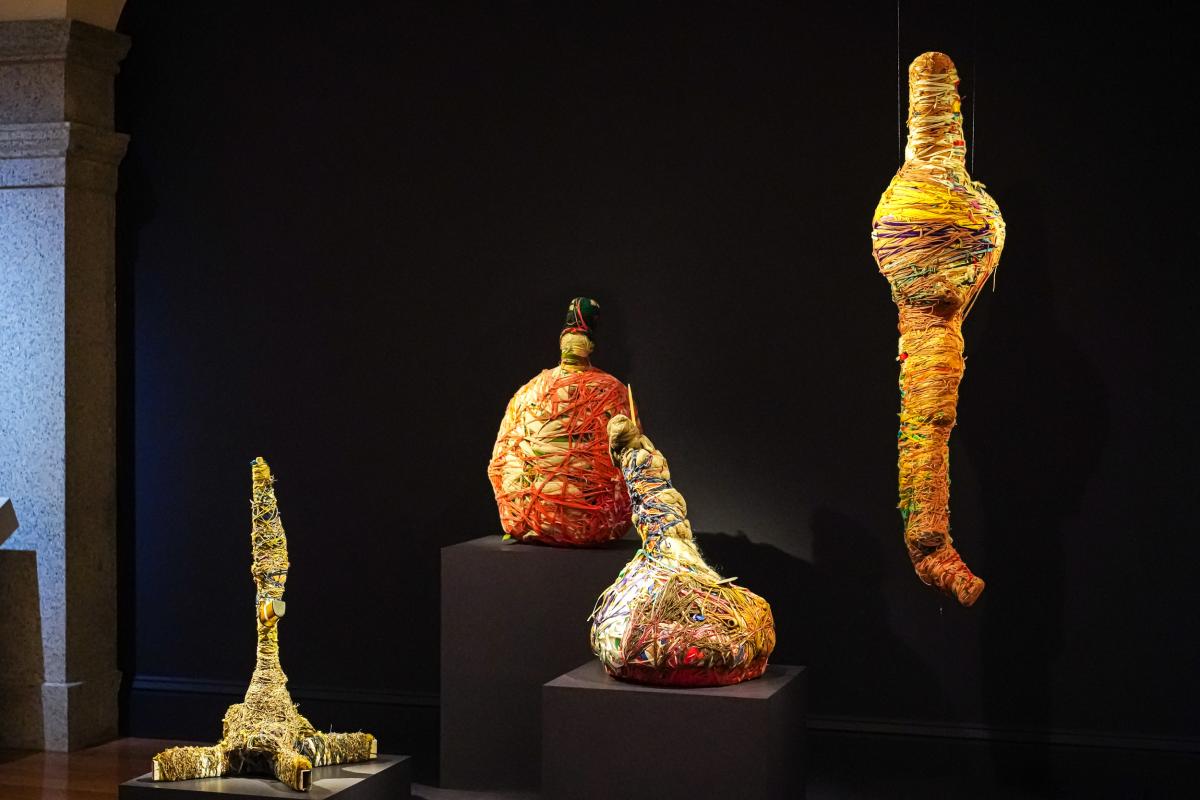Artists who learned from family, community, and personal journeys have always been a presence in American art, but it was not until the late twentieth century that the collective force of their vision turned the tide for good, bringing them fully into the art-world mainstream. This era was especially significant for artists who were marginalized in multiple ways. These creative individuals witnessed social revolutions from civil rights to disability rights and made art that asserted both their presence and perspectives.
We Are Made of Stories: Self-Taught Artists in the Robson Family Collection, a new exhibition at SAAM, examines how, despite wide-ranging societal, racial, and gender-based obstacles, the creativity and bold self-definition of untrained artists became major forces in American art.
Margaret Z. Robson embraced art that reflected diverse and personal journeys, and supported museums and scholars in making it more available to the public. Her son, Douglas, now carries these efforts into the future. In 2016, he donated ninety-three artworks from his mother’s collection to SAAM. The exhibition features selected works from this original gift, as well as thirty-two promised gifts from his own collection, and a major painting by Dan Miller that he donated to SAAM in 2022.
“The works of art in the Robson Family Collection give voice to people who faced challenge, oppression and often extreme marginalization in their lifetimes, but by leaving their imprint in the form of art, moved the needle toward a more enlightened age, a more humanistic moment,” said Leslie Umberger, curator of folk and self-taught art. “This project amplifies unique perspectives and argues that multivocality is essential for a full and genuine picture of the United States. It looks at the solitary paths many of these artists traveled, as well as the collective ground they gained by asserting their personal views of the world and telling their own story.”
Some of the artists included in the exhibition are:
BILL TRAYLOR
Bill Traylor told the story of his life and experience from enslavement to Jim Crow segregation in evocative drawings and paintings that described his memories, as well as a rising Black culture in mid-century America.
NELLIE MAE ROWE
Rowe made vivid mixed-media drawings of hybridized creatures and African American women enmeshed in color and abundance, consistently depicted as proud, creative individuals brimming with love and generosity. Rowe took control of her own narrative (and that of Black women) by rejecting negative stereotypes and creating images of Black beauty and joy—a radical act of selfhood.
THE PHILADELPHIA WIREMAN
The mixed-media objects by this never-identified artist were discovered in a Philadelphia alley in the late twentieth century. Carefully wrapped bundles of wire and found objects from an urban environment, these palm-sized, talismanic artworks speak of day-to-day survival through perseverance and creativity as action.
JUDITH SCOTT
Judith Scott found her artistic medium of fiber at Creative Growth Art Center, a California organization dedicated to helping individuals with developmental disabilities flourish through art. Although Scott’s enigmatic, yarn-bound sculptures are not autobiographical in a traditional sense, they embody an alternate language sought and found, a way for her to convey her emotions, and describe who she was.
For more than fifty years, SAAM has been a leader in advocating for a diverse populist voice within the context of what is traditionally considered great art. The museum’s representation of art by folk and self-taught artists began in 1970 with the acquisition of James Hampton’s The Throne of the Third Heaven of the Nations’ Millennium General Assembly. Today the collection is among the most significant anywhere.
This story is drawn from exhibition texts and the catalogue. We Are Made of Stories: Self-Taught Artists in the Robson Family Collection is on view through March 26, 2023 in Washington, DC. Learn more about this exhibition and see additional artworks in our online gallery.














